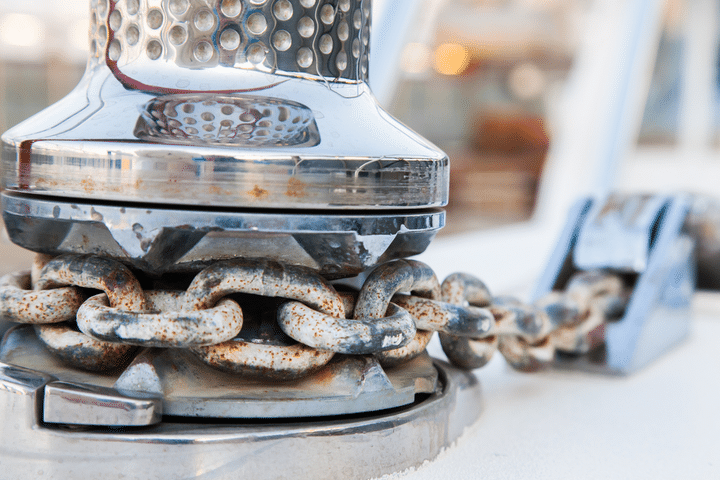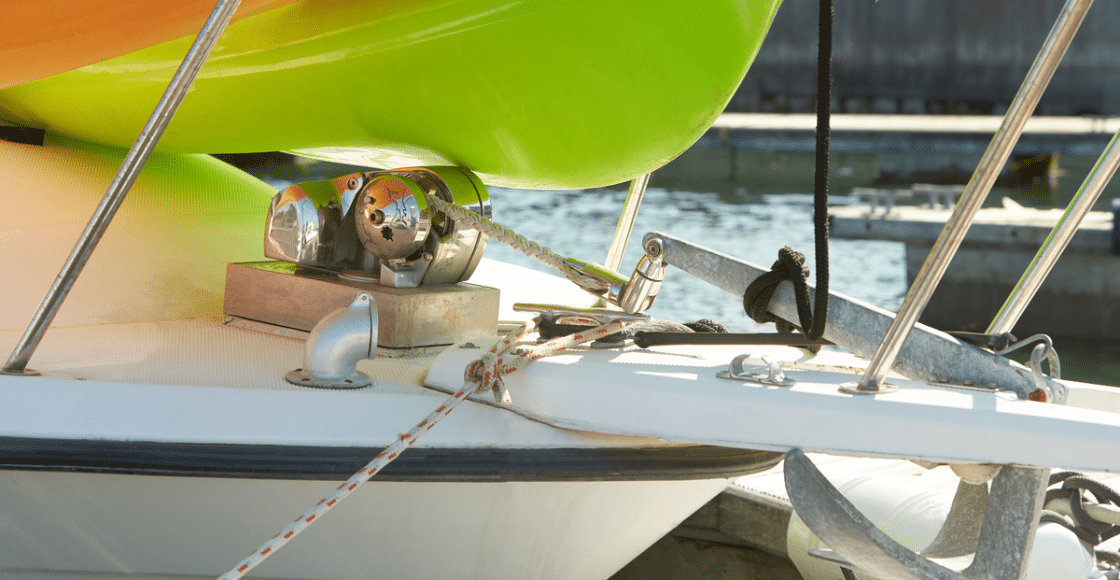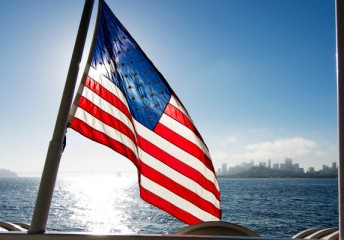Electric Boat Anchors
Last Updated on January 11, 2024 by Boatsetter Team
We’ve covered how to read a boat GPS, and now it’s time to move onto anchors! Having a good anchoring mechanism on your boat is of the utmost importance. Whether you are a weekend boater or a professional fisherman, or cruiser, you will need an anchor for convenience and safety.
We now have electric boat anchors that will help you get your anchor down to the seafloor and back up to the surface with minimal physical effort required by who uses them. This allows you to save your physical strength and safety while moving quicker and more efficiently out in the sea. There are many types of manual anchors (some listed below), but if you have a little extra money, it is always good to check out some of these electric anchors.
What Kind Of Anchors Are There?
Many different kinds of anchors will be able to serve different fishing and boating needs. Here, you can get a summary of some of them so you can see whether an electric boat anchor is a good fit for you.
The Grapnel Anchor
A grapnel anchor is a very simple kind of anchor. It features a shank with either four or more tines that will hold at the bottom of the sea. It is a fairly lightweight anchor (although it can be odd to store onboard due to its specific shape) that can also be used to retrieve gear or cargo that may have been lost overboard. This kind of anchor can sometimes be difficult to get back up on board, but its simplicity of use often compensates for this downside.
The Northill Anchor
The Northill anchor is another lightweight anchor option that was primarily designed for seaplanes. This type of anchor features two plow-like blades on a shank that can fold into itself for easier storage.
The CQR Plough Anchor
This type of anchor is named as such due to its aesthetic similarity to an agricultural plow. They can stow in a roller at the bow, and you can use them on almost any kind of seafloor. The CQR Plough anchor is especially popular among cruising sailors and private boaters. They do, however, feature a pretty significant flaw – they have been known to break at the seafloor on their way back to the surface.
The Delta Anchor
The Delta anchor comes at the heels of the CQR Plough anchor, and it was developed primarily for use on floating systems like oil rigs. The weighted tip features a higher fluke area to weight ratio, making it more effective than the previous anchor type mentioned. This kind of anchor is also self-launching since all you need to do is drop it from a bow roller while paying out the rode. It is more effective on hard floors than its predecessor, as well.
The Danforth Anchor
The Danforth Anchor is a fluke-style anchor. It features a stock at the crown that has two flat triangular flukes attached. It is another lightweight anchor that is easy to bring back to the surface and easy to store. However, one downside to this anchor is that it will not hold in gravel or weeds, and it can have some trouble holding in boulders and coral. This type of anchor is recommended for more common sea floors, such as soft mud or hard sand.
The Bruce or Claw Anchor
This kind of anchor is a type of anchor that is more recommended for larger boats, such as commercial ships and oil rigs. The reason this is so is that they feature a low holding-power-to-weight ratio. As the name suggests, the anchor works as a claw, and this specific kind has quite a high rate of anchoring properly at the first try, and they are not known for breaking off of the ocean floor due to wind or tide changes. The biggest downside to this kind of anchor is that it has struggled with weed or grass bottoms.
Modern Scoop Type Anchors
As their name suggests, modern scoop anchors feature a scoop-like element, like a shovel with a concave fluke. They work the same as a shovel as well, more or less. They dig through the ocean floor and remain there, digging themselves even deeper if you were to apply pressure. They can set themselves fairly quickly on almost any floor, have great holding power, and are fairly easy to store in a bow roller.
Their only downsides are that this may make them harder to retrieve off of the ocean floor, and they may come up with sediment or mud scooped up from the bottom. Some of the different types of modern scoop anchors include a spade, a sword, a Raya, an ultra, and a boss.
What Are The Main Features When Choosing An Electric Boat Anchor?

Many different features are important to note when choosing an electric boat anchor. Now that you have decided to get yourself one, you should know what to consider depending on the kind of boat and what you use it for.
Weight:
anchors can range anywhere from fairly lightweight, between 30 to 40 pounds, to extremely heavy and hard to retrieve manually, such as in the 100 to 120-pound range (these are more commonly used in saltwater and larger boats).
This means that you will need to consider what kind of anchor weight your boat needs, what kind of anchor weight your boat can handle, as well as consider what kind of anchor weight you can handle, or if you will also need to get a winch to help you bring it back up to the surface. We will also provide a section on anchor winches and their uses.
Motor Strength:
having a motor that is able to withstand the weight and pull of your electric anchor and features the ability to withstand long-term corrosion by saltwater is very important.
If you are only going out in freshwater, such as lakes, you will need to worry about your motor strength less. However, suppose you are going out in saltwater. In that case, its corrosive effects can lower the lifespan of your electric anchor and winch and potentially even cause you problems while you are out at sea if the motor burns out while you are sailing or fishing.
Power Consumption:
The stronger and larger electric anchor you decide to get, the more power it will consume. A way to get around this, if you are a veteran sailor or boater who does not have a large and loose wallet, would be to install a marine solar panel on your boat, so you can conserve some energy for the winch while you are out in the water during the day.
Noise:
If the noise from your electric boat anchor is something that you find troublesome, then you can look into installing a device called a davit. This kind of device will pull your anchor to the surface while preventing too much movement and noisy vibrations that may bother you when pulling your anchor back up.
Rope Strength:
perhaps quite an intuitive feature, but the strength of your rope is also extremely important in making sure your anchor does not get stuck and lost at the bottom of the sea or the ocean. At the same time, the pull of the wind and the currents, as well as damage from rocks and coral and other sorts of sea debris, will make it so that you will have to make sure your rope is strong enough to handle it all. You want to have a ratio of 3 to 1 (rope and chain length to water depth) in terms of length.
What are the Benefits Of Also Getting An Anchor Winch?
In the simplest of terms, an anchor winch is a machine that allows you to pull your anchor up and down. If you are thinking of purchasing an electric anchor, it will have an anchor winch that will allow you not to have to retrieve the anchor by hand. There are several perks of having an anchor winch, not only that you will not personally have to do all of the heavy lifting.
The seas can be a dangerous place. Sometimes, you might need to leave the place you are anchored in in a hurry, whether because of worsening weather conditions or a boat coming your way that has not spotted you. You will also not have the risk of falling overboard or hurting yourself in some way trying to pull your anchor back up in a hurry if this is a mechanized process that can be done for you.
Even if you are not concerned about safety, the ability to move from place to place easily and fast will make your time out in the water much more efficient. At the same time, if you have some sort of physical constraint that keeps you from being able to do too much physical effort, then an anchor winch will be an absolute lifesaver.
What Types of Anchor Winches Are There?
As with most elements of the boating industry, there are many types of anchor winches that you get to choose from. Here, you can find a summary of some of them so you can be further informed.
Windlass Anchor Winches
A windlass anchor winch is a kind of winch that pulls the chain and rope vertically over the winch, which is placed in a horizontal position. The horizontal windlass as well as the anchor rode are placed in a 90-degree wrap around a chainwheel that will pull the rope up and down as needed. The anchor will be stored in an anchor well or a storage locker when it is not in use.
Capstan Anchor Winches
A capstan anchor winch features not a 90-degree angle wrap, but a 180-degree wrap around a chainwheel. This kind of winch is also often called a vertical windlass. The anchor line will rotate horizontally around the winch, which is found in an upright position. There is also the presence of a gypsy that allows the winch to pull the rope and chain in and out of the water.
Drum Anchor Winches
As the name suggests, a drum anchor winch rolls the rope and chain up into a drum. This means that this kind of winch is best suited for a boat that does not possess an anchor well or a storage locker. This kind of winch can be mounted anywhere, as long as it has a direct line in order to pull over the bow roller. The only downside to this kind of winch is that you are somewhat limited in the amount of rope you can fit in it, so if you need extra length, you can use a thinner rope, but that can be an issue if you need a stronger rope for a heavier anchor.
Final Verdict
There are many different kinds of anchors out there for you to choose from. If you choose to stick with a non-electric kind, that is absolutely fair; however, if you want to save yourself the trouble and the physical exertion of pulling the anchor back up manually every time and would also prefer the added safety of being able to move around quicker in case of danger or bad weather conditions, then we recommended you look into an electric boat anchor. They are definitely a time-saver and can one day even become a lifesaver, just like a good safety list!
Recommended Watch:

Boatsetter empowers people to explore with confidence by showing them a world of possibility on the water. Rent a boat, list your boat, or become a Boatsetter captain today.










